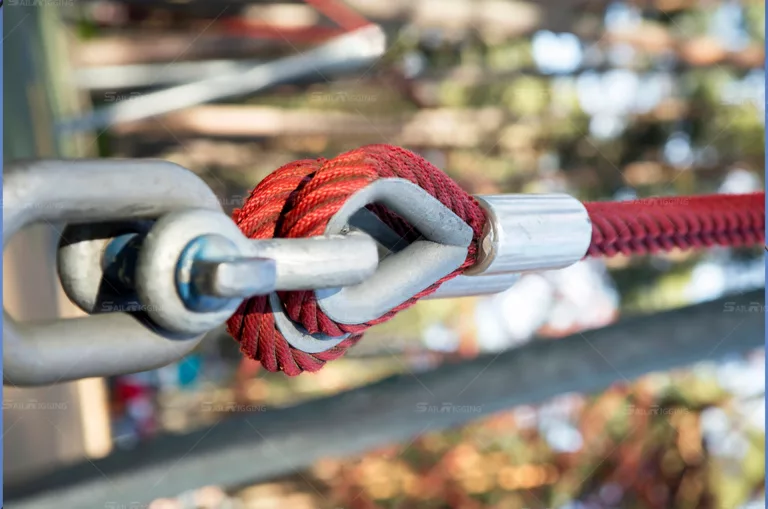Shackles In Sailboats
Shackles are one of the most essential pieces of rigging hardware in Sailboats. Used to connect sails, rigging lines, anchor chains, and other critical components, shackles play a crucial role in ensuring the safety, efficiency, and durability of marine systems. At Qingdao Sail Rigging Co.,Ltd , with over 15 years of experience in manufacturing high-quality rigging hardware, we provide durable and corrosion-resistant shackles specifically designed for marine environments. This article explores the different types of shackles used in sailboats and marine applications and their importance in ensuring safe and efficient sailing.
Table of Contents
Why Shackles Are Essential in Sailboats?
Shackles serve as connectors that allow quick and secure attachment and detachment of rigging components in sailboats and other marine applications. Given the harsh marine environment, shackles used in boats must be strong, corrosion-resistant, and capable of handling high loads. The right type of shackle ensures smooth sailing operations and prevents equipment failure in critical situations.
Types of Shackles Used in Sailboats and Marine Applications
1. Bow Shackles (Anchor Shackles)
- Description: Bow shackles have a larger, rounded shape, providing more space for multiple connections.
- Application: Commonly used for attaching anchor chains, mooring systems, and other rigging points requiring multi-directional load distribution.
- Advantages: The rounded design reduces stress on the shackle and allows for flexibility in movement.
2. D Shackles (Chain Shackles)
- Description: D shackles have a narrower, more confined shape, making them ideal for inline loads.
- Application: Used in sailboat rigging, connecting halyards, sheets, and other running rigging components.
- Advantages: Stronger in straight-line loads, preventing excessive side movement.
3. Snap Shackles
- Description: A quick-release shackle with a spring-loaded mechanism, allowing for easy operation with one hand.
- Application: Used for quick connections in sail handling, such as attaching sails, sheets, and halyards.
- Advantages: Allows for fast release in emergency situations, making it ideal for racing and performance sailing.
4. Long D Shackles
- Description: A longer version of the standard D shackle, providing extended reach and additional space for attachments.
- Application: Used where extra clearance is needed in rigging setups.
- Advantages: Offers better flexibility for unique rigging configurations.
5. Twisted Shackles
- Description: Designed with a 90-degree twist to align connections at different angles.
- Application: Used in applications where the connected components do not naturally align.
- Advantages: Reduces unnecessary stress on ropes and rigging lines.
Material for Shackles In Sailboats
Shackles used in sailboat applications must withstand harsh conditions, including saltwater exposure, UV rays, and high loads. The most common materials include:
- Stainless Steel Shackles: Highly resistant to corrosion and rust, making them ideal for long-term marine use.
- Galvanized Steel Shackles: Offers good strength and moderate corrosion resistance at a lower cost than stainless steel.
Choosing the Right Shackle for Your Sailboat
When selecting a shackle for your sailboat or marine application, consider the following factors:
- Load Capacity– Ensure the shackle can handle the expected working load limit.
- Corrosion Resistance– Stainless steel is best for long-term saltwater exposure.
- Type of Connection– Choose the right shape (bow, D, snap, etc.) based on the required application.
- Ease of Use– Quick-release shackles are preferable for racing or frequent adjustments.
Shackles are indispensable components in sailboats and marine applications, ensuring secure and reliable rigging. If you have any question about shackles in sailboat or marine, don’t hesitate to contact Sail Rigging.





